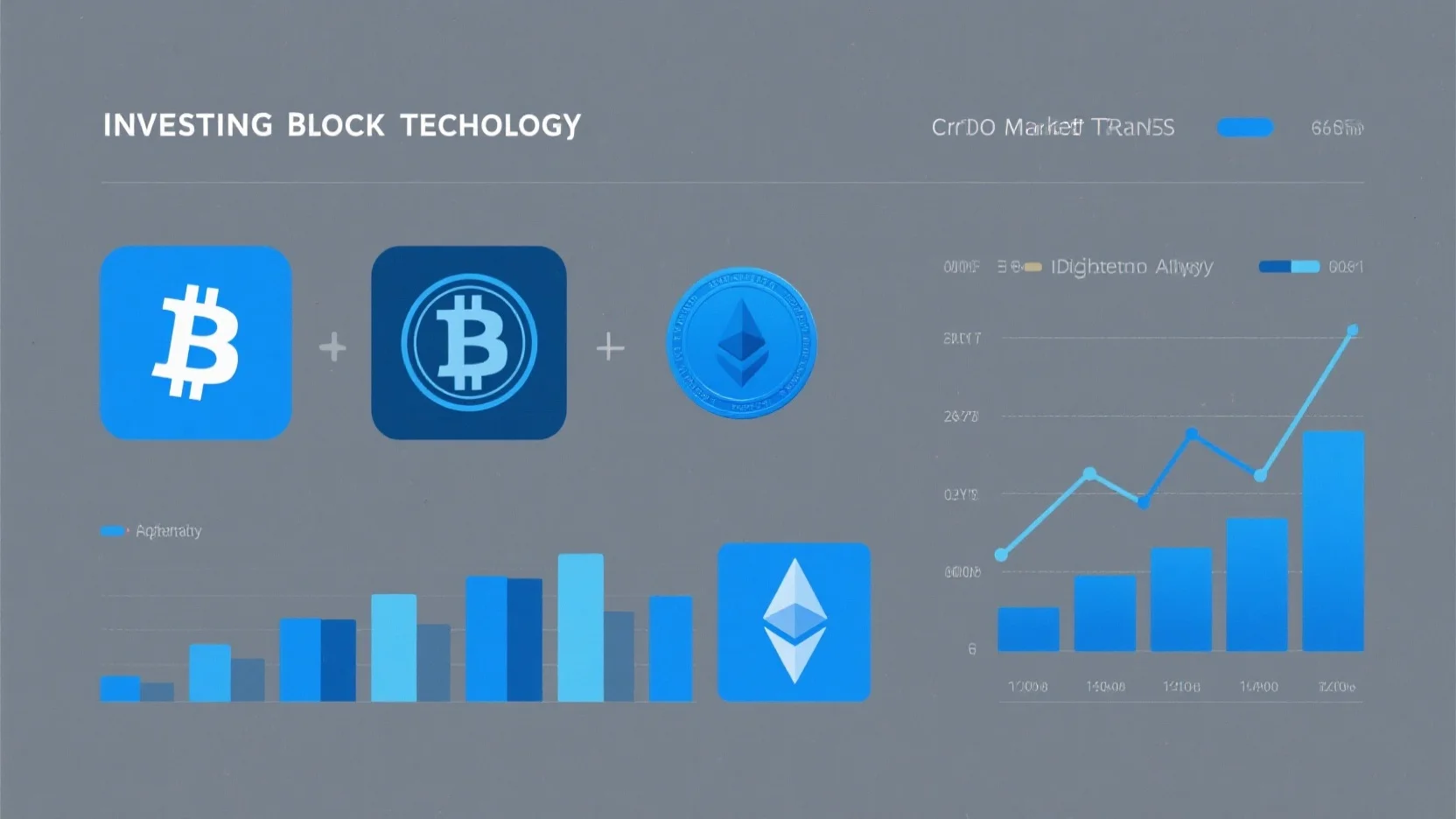Image Source: pexels
Cryptocurrencies have revolutionized the way money operates globally. Among the most popular are Bitcoin and Ethereum. Bitcoin, often referred to as "digital gold," is known for its ability to retain value. On the other hand, Ethereum powers apps and smart contracts, showcasing its innovative potential. By 2025, these two cryptocurrencies will cater to different investment strategies. To make an informed decision, it’s crucial to evaluate their unique strengths. Whether you’re seeking stability or growth, understanding Bitcoin vs 2025 Ethereum: Which Cryptocurrency Should You Invest In? is key to aligning with your financial goals.
Key Takeaways
- Bitcoin is a steady way to save money, making it safer for keeping wealth.
- Ethereum has new tools like smart contracts and supports DeFi and NFTs, which attract investors wanting growth.
- Think about your goals: Bitcoin is good for short-term safety, while Ethereum might give bigger gains over time.
- Having both Bitcoin and Ethereum can spread out risk and mix safety with growth chances.
- Keep up with market changes and new tech to make wise choices in cryptocurrency.
Key Differences Between Bitcoin and Ethereum

Image Source: pexels
Purpose and Use Cases
Bitcoin as a Store of Value
Bitcoin is like digital money and holds its value well. People use it as an alternative to gold or other traditional assets. It’s great for sending money across countries with low fees. This makes it useful for sending money to family or friends abroad. But Bitcoin is mainly for payments and doesn’t support apps or smart contracts.
Ethereum as a Smart Contract Platform
Ethereum does much more than just handle payments. It allows smart contracts, which are programs that run automatically on its blockchain. Ethereum also supports apps, DeFi platforms, and NFTs. This makes Ethereum a popular choice for creating new and exciting technologies.
| Feature | Bitcoin | Ethereum |
|---|---|---|
| Main Use | Digital money and store of value | Platform for apps and smart contracts |
| Payment Use | Pay for goods and services | Allows programmable payments |
| Sending Money Abroad | Low-cost transfers | Not mainly used for this |
| Smart Contracts | Not available | Supports self-running agreements |
| Apps | Not available | Runs many types of apps |
| DeFi | Not available | Powers DeFi platforms |
| NFTs | Not available | Used for NFT marketplaces |
| Innovation | Limited to payments | Helps developers create new tools |
Technology and Consensus Mechanisms
Bitcoin’s Proof-of-Work (PoW) Model
Bitcoin uses Proof-of-Work (PoW) to keep its network secure. Miners solve hard math problems to confirm transactions. This system is very safe but uses a lot of energy. Many people worry about how this affects the environment.
Ethereum’s Transition to Proof-of-Stake (PoS)
Ethereum now uses Proof-of-Stake (PoS), which saves energy by 99.95%. PoS makes the network faster and handles more transactions at once. It’s also safer because attackers need to own a lot of Ethereum to cause harm.
| Consensus Mechanism | Energy Use | Security |
|---|---|---|
| Bitcoin (PoW) | Uses a lot of energy for mining | Could be attacked if enough computing power is controlled |
| Ethereum (PoS) | Uses much less energy | Safer since attackers need to own a large amount of staked Ethereum |
Market Position and Adoption
Bitcoin’s Market Dominance
Bitcoin is the most famous and widely used cryptocurrency. Big investors and companies trust it the most. For example, Bitcoin ETFs have gained $40 billion, while Ethereum ETFs only got $3 billion. This shows Bitcoin is a top choice for stable investments.
Ethereum’s Expanding Ecosystem
Ethereum keeps growing because of its role in DeFi, NFTs, and Web3. Developers use it to build creative and useful tools. Its flexibility makes Ethereum a leader in blockchain technology as more people adopt it.
Bitcoin vs 2025 Ethereum: Market Trends and Predictions
Supply and Demand Dynamics
Bitcoin’s Limited Supply and Halving Events
Bitcoin has a maximum of 21 million coins. This makes it rare. Every four years, mining rewards are cut in half. In April 2024, rewards dropped from 6.25 BTC to 3.125 BTC. These cuts make Bitcoin scarcer, often raising its price. Experts think Bitcoin could cost $100,000 to $500,000 by 2025. Prices depend on the economy and new rules.
Ethereum’s Role in DeFi and NFTs
Ethereum is important for DeFi and NFTs, increasing its demand. By 2025, easier rules and teamwork with banks may help Ethereum grow. If NFT trading becomes popular again, its value could rise more. Experts guess Ethereum might cost $5,200 to $8,666 by late 2025.
Technological Advancements
Bitcoin’s Layer 2 Solutions
Bitcoin’s Layer 2 tools, like Lightning Network, make it faster and cheaper. Lightning Network allows quick, low-cost payments. Rootstock adds smart contracts to Bitcoin’s system. These tools could double Bitcoin’s DeFi market by 2025. This makes Bitcoin more useful for developers and users.
Ethereum’s Upgrades (e.g., Ethereum 2.0)
Ethereum 2.0 will make the network better and cheaper to use. New features will lower fees and improve smart contracts. By 2025, over 50% of Ethereum may be staked, making it stronger. These changes will help Ethereum stay a top blockchain choice.
Adoption and Regulation
Bitcoin as a Hedge Against Inflation
Bitcoin’s fixed supply makes it good for fighting inflation. U.S. approval of Bitcoin ETFs has brought more big investors. Experts think Bitcoin could pass $150,000 by early 2025. More people see Bitcoin as a safe and trusted investment.
Ethereum’s Adoption in Web3 and Enterprises
Ethereum is used in Web3 and business projects. Web3 allows direct transactions and managing digital items. Companies use Ethereum for creative ideas. By 2025, Ethereum’s network will grow with clearer rules and bank partnerships.
Bitcoin vs 2025 Ethereum: Investment Considerations
Risk and Volatility
Bitcoin’s Stability and Lower Risk
Bitcoin is steady and attracts careful investors. Its limited supply and strong reputation make it less likely to have big price changes. Many see Bitcoin as a safer way to keep value, especially in tough economic times. While its price can still change, it’s more predictable than other cryptocurrencies. This makes Bitcoin a good choice for lower-risk investments.
Ethereum’s Growth Potential and Higher Volatility
Ethereum has big growth chances but also higher risks. Its growing use in DeFi, NFTs, and Web3 draws developers and businesses. But this also makes Ethereum’s price change more often. If you’re okay with taking bigger risks for higher rewards, Ethereum might fit your plan.
Portfolio Diversification
Bitcoin for Long-Term Value Preservation
Bitcoin is great for keeping value over time. It’s called "digital gold" because it helps protect against inflation and economic problems. Adding Bitcoin to your investments can make your portfolio more stable and less risky.
Ethereum for Growth-Oriented Investments
Ethereum is perfect for those wanting growth. Its many uses and role in new tech make it exciting to invest in. By adding Ethereum, you can benefit from blockchain progress while still having Bitcoin’s stability.
Tip: Having both Bitcoin and Ethereum in your portfolio spreads risk. Bitcoin gives stability, while Ethereum connects you to the fast-changing crypto world.
Aligning Investments with Goals
Short-Term vs. Long-Term Strategies
Think about your goals when choosing between Bitcoin and Ethereum. If you need to save money or meet short-term needs, Bitcoin’s steadiness is better. For building wealth over time, Ethereum’s growth might bring bigger returns. Decide based on how much risk you can handle and how long you plan to invest.
Balancing Risk and Reward
It’s important to balance risk and reward in crypto investing. Bitcoin is safer with lower risk, while Ethereum offers bigger rewards but more risk. A mix of both can give you stability and growth. Be patient and learn about market trends to make smart choices.
Bitcoin and Ethereum give investors different chances to grow money. Bitcoin is rare and trusted by big companies, making it good for saving value. Ethereum is used in DeFi and NFTs, making it great for growth. By 2025, better rules and new tech could make them more important worldwide. Bitcoin is safer for careful investors, while Ethereum is for those who like new ideas. Think about your goals and how much risk you can take. Having both Bitcoin and Ethereum can help balance safety and growth.
FAQ
1. Is Bitcoin or Ethereum better for beginners?
Bitcoin is easier for beginners because it’s stable and simple. It works well as a way to store value. Ethereum has more features like smart contracts and DeFi, which can be harder to understand. If you’re new, start with Bitcoin.
2. Can I invest in both Bitcoin and Ethereum?
Yes, you can invest in both. Having both spreads out your risk. Bitcoin gives stability, while Ethereum offers chances for growth. This mix lets you enjoy both safety and exciting returns.
3. How does Ethereum 2.0 impact its investment potential?
Ethereum 2.0 makes the network faster and cheaper to use. It also saves energy, which attracts more developers and businesses. These changes make Ethereum more popular and increase its value for investors.
4. What are the risks of investing in cryptocurrencies?
Cryptocurrencies like Bitcoin and Ethereum can change in price quickly. Market trends, rules, or tech updates can cause big swings. Only invest money you’re okay losing and know your risk limits.
5. How do I decide between short-term and long-term strategies?
Short-term plans aim for quick profits but are riskier. Long-term plans help grow wealth slowly over time. Bitcoin is better for steady, long-term goals. Ethereum is good for short-term growth. Pick based on your goals and comfort with risk.
Tip: Always learn and follow market updates to invest wisely.





